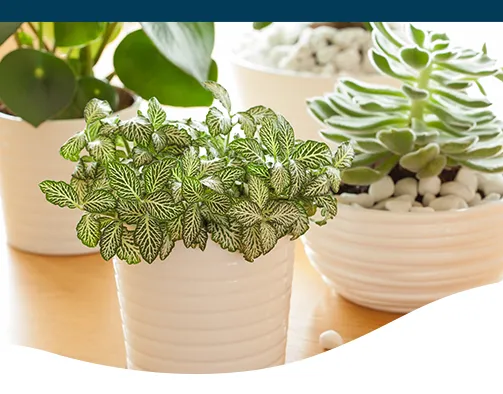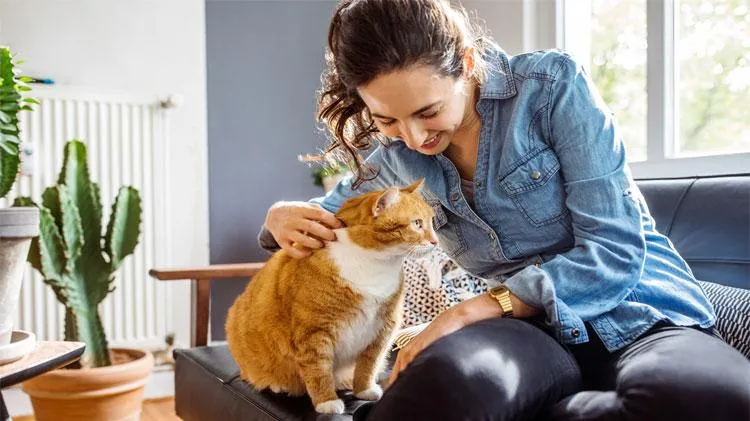Are Wax Plants Safe for Cats?
As a cat owner and plant lover, I’m often asked the question – can cats and plants coexist safely in the home? While some common houseplants are toxic to cats, there are also many safe, non-toxic options. Here’s what you should know about keeping wax plants, also called Hoya plants, around feline friends.
Overview of Wax Plants
Wax plants, or Hoya plants, belong to the dogbane family and are native to various regions in Asia and Australia. They are popular indoor houseplants known for their waxy, leather-like leaves and clusters of colorful flower buds. Wax plants come in a variety of leaf shapes and colors. Some common varieties include:
- Hoya carnosa – Heart-shaped green leaves
- Hoya kentiana – Oblong green leaves with cream variegation
- Hoya kerrii – Waxy oval leaves that are pink, red or white
As trailing or climbing vines, wax plants are well-suited for hanging baskets or trained up a moss pole. They prefer bright, indirect light and need soil that dries out between waterings. With proper care, wax plants can live for many years and often bloom multiple times per year.
Toxicity Level for Cats
The good news is that wax plants are considered non-toxic to cats according to the ASPCA’s poisons database. From my experience owning multiple cats and wax plants, I can say they have never shown any adverse reactions.
While cats may be tempted to chew on the waxy leaves due to their unique texture, wax plant sap contains hordatatannins – bitter plant compounds that act as a natural deterrent. This makes the leaves unappetizing to cats. They are unlikely to consume enough to cause any issues.

Potential Risks to Watch For
However, as with any houseplant, there are a few potential risks worth noting when keeping wax plants around cats:
- Stomach upset from chewing: It’s possible for an extremely determined cat to chew and swallow small pieces of leaf, which could result in mild stomach upset. The risk is very low though.
- Allergic reactions: Rarely, some cats may have a mild local skin irritation from brushing against the sap of damaged leaves. But this seems to affect only a small percentage of cats.
- Ingesting pollen or nectar: If a wax plant in heavy bloom is not in a high, inaccessible area, cats may lick or chew the flower buds. Pollen/nectar in large quantities could cause mild vomiting.
Basically, as long as wax plants are kept out of paws’ reach and chewing range of cats, and any fallen leaves/buds are swiftly cleaned up, there should be minimal risk. Just use common sense and monitor your cat’s behavior around plants.
Care Tips with Cats in Mind
Here are some tips to keep wax plants and cats coexisting peacefully in the home:
- Hang pots from ceiling hooks or place on high shelves versus at cat-head level.
- Opt for trailing wax plant varieties versus upright types if you have climbing/jumping cats.
- Keep plants far from food/water/litter boxes to avoid territorial chewing drives.
- Remove fallen leaves, flowers or damaged sections promptly when repotting.
- Training cats to avoid plants from a young age is helpful if possible.
With some common sense steps, wax plants can enrich your home decor without worry. Just monitor felines closely at first until you know their behavior patterns around greenery.
Navigating Toxic vs. Non-Toxic Confusion
I know it can get confusing sorting through conflicting plant safety lists online. As an example, some sources claim Hoya carnosa may be toxic. In my experience, this is likely due to it being a member of the obscure Asclepiadaceae family.

But major poison databases consistently classify all true Hoya species as non-toxic. The hordatannins they contain make them unappealing to ingest. Unless a cat devours an abnormal amount of leaves, any tummy upset would be mild and temporary.
So in summary – while it’s smart to keep potentially toxic plants far from pets as a precaution, true wax plants/Hoya seem to present very minimal risk to cats if other common sense steps are followed.
Bringing It All Together
To recap – based on extensive research and personal experience over many years keeping cats and wax plants, here are the key takeaways:
- True wax/Hoya plants contain natural compounds making their leaves unappetizing to cats.
- They are classified as non-toxic by leading poison databases.
- Risk of adverse effects is very low if plants are kept out of chewing range.
- Monitor for signs of leaf chewing or suspicious behavior just in case.
- Follow care tips to give both cats and plants their best chance of coexisting peacefully.
With diligence, it is totally possible – and quite rewarding! – to incorporate both feline friends and beautiful wax blooms into the home safely. Just keep lines of communication open with your vet if ever in doubt.
Hope this helps provide a comprehensive answer on whether wax plants are cat-safe! Let me know if you have any other plant or pet questions. Stay safe and have fun designing your green sanctuary!

Wax Plants Safe for Cats
| Plant | Toxicity Level | Description |
|---|---|---|
| Chinese evergreen | Low | Shiny leaves, safe for cats. Produces small white flowers. |
| Peperomia | Low | Variegated leaves, tolerant of low light. Non-toxic if ingested. |
| Snake plant | Low | Yellow striped leaves, effective air purifier. Safe if nibbled or eaten. |
| Pothos | Low | Vine-like variegated leaves. Only toxic if large quantities ingested. |
| Philodendron | Low | Heart-shaped leaves come in many varieties. Minimal risk unless eaten. |
FAQ
-
Is a wax plant harmful for cats?
Mostly no, a wax plant is generally not dangerous for cats. However, some cats may chew on the leaves and stems which could potentially cause an upset stomach. So it’s best to keep wax plants up high or in a room the cat doesn’t have access to.
-
Will a cat eat a wax plant?
While cats are curious animals, they don’t usually eat wax plants. The leaves have a waxy coating that makes them unappealing to chew or ingest. At the same time, a curious cat may nibble a leaf from time to time. As long as it’s not doing damage to the plant, an occasional taste shouldn’t hurt.
-
Are there any risks to cats from wax plants?
For most cats, wax plants are basically safe to have in the home. The hard waxy leaves and stems rarely interest cats. Nevertheless, it’s possible a cat may accidentally ingest a small amount of leaf or stem material while investigating the plant. This could potentially cause some stomach upset. The bigger concern is if a large leaf or long stem piece was swallowed, it may get stuck in the esophagus or intestines.
-
What do I do if my cat eats part of a wax plant?
If the cat eats a small bite of leaf or stem, it’s usually nothing to worry about. However, if your cat has basically swallowed a big piece of the waxy plant, watch closely for signs of choking or discomfort. In that case it may be worth calling your vet to see if inducing vomiting is advised, as a blockage can occur. It’s also wise to move the plant to a safer spot afterward, as cats will sometimes keep tasting things they shouldn’t.
-
Do wax plant pollen or sap cause problems for cats?
Most experts say wax plant pollen and sap are not toxic to cats. The plant pollen is somewhat waxy and sticky so it may cause no harm if ingested in tiny amounts while grooming. But cats don’t often come into contact with it. The plant sap is also not poisonous, but keep male cats away from female wax plants which excrete sticky pollen-collecting resin, as this type of intrigue could end badly!

-
How can I cat-proof my wax plants?
If keeping wax plants with cats, take simple precautions. Put the plant up high where kitty can’t reach to nibble or knock over. You can also use thorny plant guards as a visual deterrent. Finally, give cats other stimulating toys, scratching posts and attention to distract them from plant investigating. With some effort, it’s quite possible to have wax houseplants and cats coexist peacefully! But ultimately, their safety comes first so watch them closely.
